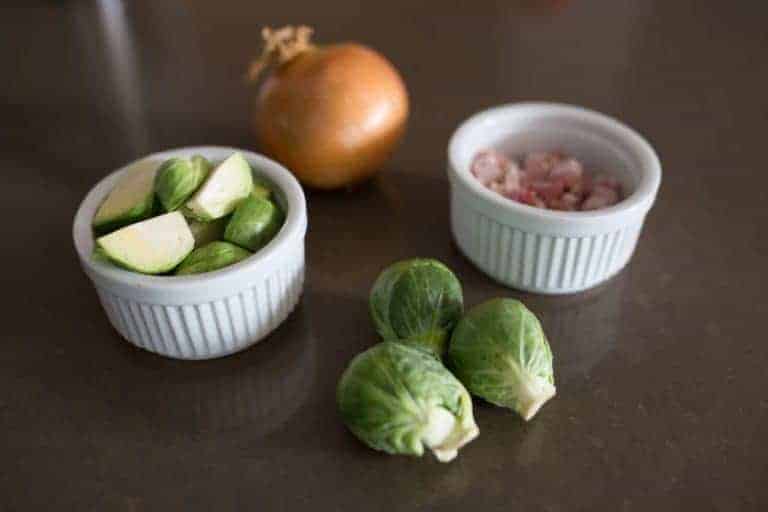What’s Fresh for Winter: Fruits & Veggies to Feed Your Baby (and Family)
Eating seasonally sounds so Earth mama and natural and organic. Who doesn’t like participating in activities that make them feel like they’re making a difference, especially if it’s low effort? Eating by the seasons is actually incredibly beneficial for you, your family, and your community. You save money, your produce is more nutritious because it’s fresher, and your dollars are more likely to go to local farmers than mass importers.
While some states do have the climate to grow exotic fruits like kiwis and guava, you probably don’t pass too many tropical fruit farms on your morning commute. Based on the produce section at the local grocery store, though, you’d think you lived in Hawaii! Although it’s wonderful to satisfy a strawberry craving in the middle of winter, these fruits and vegetables have likely traversed thousands of miles over several days to make it to the store. They’ve lost nutrients, they aren’t fresh, and the costs of that long journey are passed on to you as the consumer.
On your next wintertime trip to the grocery store, pick up some of these fruits and vegetables. One or two of these items may be unfamiliar to you, so we’ve included some delicious baby recipes as inspiration. Check them out!

Brussels Sprouts – Don’t let memories of your  mom’s soggy sprouts discourage you from trying out this tasty and nutritious vegetable. Trim, steam, and season with butter, salt, and pepper as a quick-fix side dish. Get Baby in on the action with a ham, onion, and Brussels sprout purée.
mom’s soggy sprouts discourage you from trying out this tasty and nutritious vegetable. Trim, steam, and season with butter, salt, and pepper as a quick-fix side dish. Get Baby in on the action with a ham, onion, and Brussels sprout purée.
Leeks – This nutrient-rich veggie is a star in France (our home country!), but it’s sadly neglected here in the states. Leeks taste like very mild onions, so it’s the perfect way to boost the flavor of your recipes. Try it in almost any purée, or even on its own!
Rutabagas – Big, bulbous, and rustic-looking, don’t let the unattractive appearance of this root vegetable fool you. Its flavor is startlingly sweet and tender. The rutabaga can be cooked in a variety of ways, including roasted, boiled, baked, or mashed. Older babies will be kicking their feet with glee when you break out finger-friendly roasted rutabaga cubes.
Parsnips – If you’ve never cooked with parsnips, winter is the season to start – they taste extra sweet after winter frosts! Parsnips have plenty of antioxidants (do your worst, cold season!) and one cup of parsnips has more potassium than a banana. Potassium is an electrolyte and helps you maintain a healthy heart. The USDA found that on a given day, less than 1% of women consumed the daily recommended amount of potassium, so a cup of parsnips will help.
 Certain Fruit Varieties – If you live in agricultural zones 9, 10, or 11, you can find fresh Meyer lemons and navel oranges during the winter. (Look it up your agricultural zone here.) Anjou pears are known as the ‘winter pear,’ so if you want to whip up some pear and cottage cheese or a flavorful pear and ginger compote, look for red or green Anjous in your produce aisle.
Certain Fruit Varieties – If you live in agricultural zones 9, 10, or 11, you can find fresh Meyer lemons and navel oranges during the winter. (Look it up your agricultural zone here.) Anjou pears are known as the ‘winter pear,’ so if you want to whip up some pear and cottage cheese or a flavorful pear and ginger compote, look for red or green Anjous in your produce aisle.
Turnips – Turnips are a multipurpose veggie; the greens have lots of calcium, iron, and fiber, while the roots are a powerhouse of vitamins A and C. They have an undeserved reputation for bitterness, but are actually surprisingly sweet when first picked. Choose smaller turnips with smooth skin, since these are tenderer and tastier. If there’s a cold going around, double down on your dose of turnips. Turnips are an expectorant and can help loosen up that phlegm and calm your cough.
Collard Greens – Traditionally seen as a Southern side dish, collards can be grown and enjoyed all over the country. Select a crisp, deep green bunch or two from your produce aisle or farmer’s market, wash the leaves, and simmer in a broth until they’re nice and tender. You can also blend them into a green smoothie for yourself or your little one for a refreshing taste of Southern goodness!
Your produce section may not be much help as you try to figure out what’s actually in season, so take a trip to your local farmer’s market. That’s the best way to find locally grown, fresh produce for your baby and the rest of your family. Don’t hesitate to strike up a conversation with the farmers manning the stands, either. They’re usually happy to share their inside information on how to find, select, and cook seasonal fruits and veggies.





Leave a Reply
Want to join the discussion?Feel free to contribute!